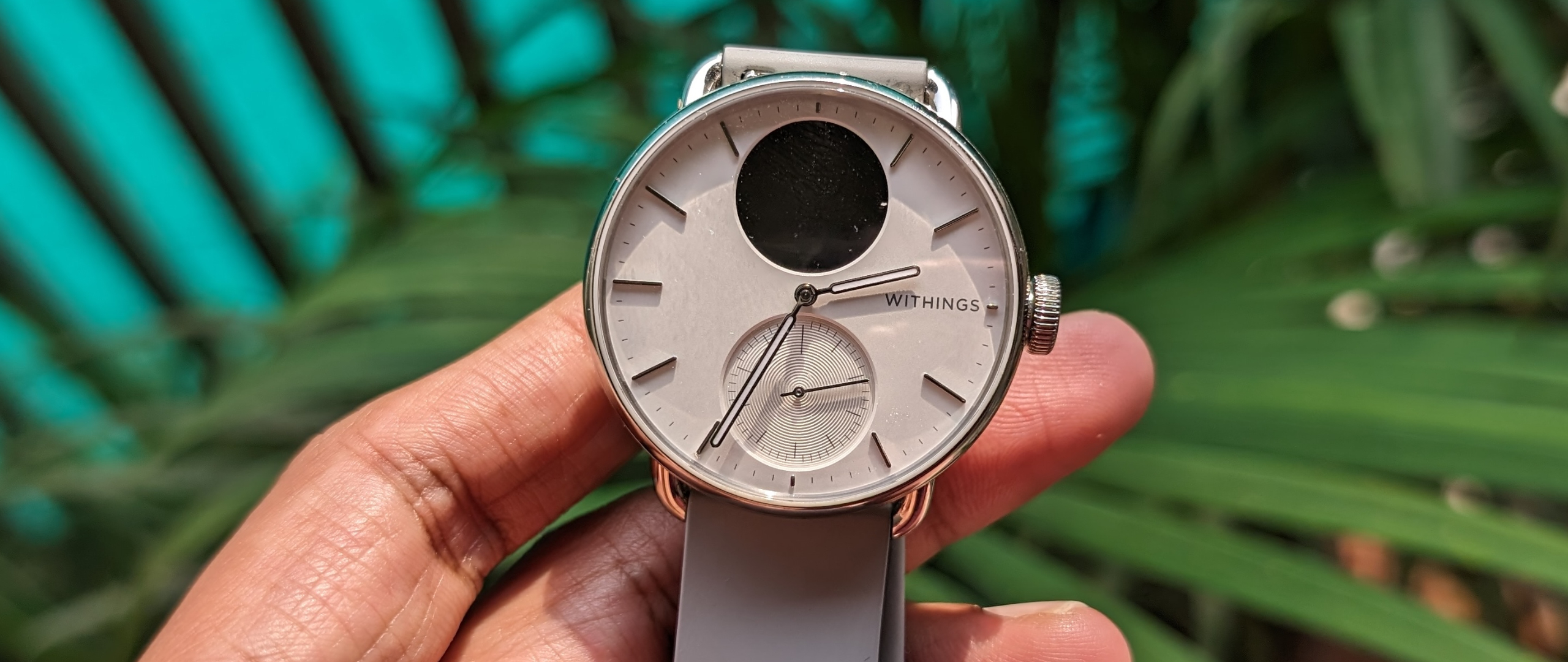Laptop Mag Verdict
The Withings ScanWatch 2 is perfect for those who don’t like smartwatches, yet still want to monitor their health. It looks nice, lasts for weeks, and houses a laundry list of advanced sensors without feeling bulky.
Pros
- +
Analog watch aesthetics
- +
Incredible battery life
- +
Excellent sleep tracking
- +
Impressive temp measuring
- +
Distraction-free experience
Cons
- -
Cluttered app
- -
Inconsistent exercise tracking
- -
No GPS
Why you can trust Laptop Mag
I've never been a smartwatch person. Not only do I find them far less charming, but I also don’t want to live with what’s pretty much a mini smartphone strapped on my wrist. For people like me, hybrid smartwatches offer a solid middle ground: they’ve got the looks of a classic timepiece and the brains of a modern smartwatch.
I’ve worn the original Withings ScanWatch for over a year and its new successor adds a handful of key upgrades. It may be the new hybrid smartwatch to beat, but is it one of the best smartwatches, too?
The Withings ScanWatch 2, as it’s cumbersomely called, brings Withings’ flagship hybrid smartwatch on par with the competition. Most notably, it comes equipped with a 24/7 temperature sensor that can track your body’s baseline fluctuations and help predict impending illness.
At $350, it’s also $50 more expensive than its predecessor. Is it worth that cost? Well, after spending nearly a month with the Withings ScanWatch 2, let’s find out.
Withings ScanWatch 2: Price and availability
The Withings ScanWatch 2 is available in 42mm and 38mm sizes for $349.99 at BestBuy and the official Withings website.
You can purchase additional bands, starting from $36 for a sports strap, $50 for a leather one, and $90 for a metallic band.
Withings ScanWatch 2: Design
From the moment you pull the ScanWatch 2 out of its box, you begin to notice its hybrid qualities. It swaps out the giant, color touchscreen for a sleek and classy analog design that can go toe-to-toe with any traditional wristwatch. There are even two illuminated physical baton hands and a smaller, bottom analog dial tracking your step progress.
The materials match up to the premium appearance as well: it’s made out of stainless steel and a piece of sturdy sapphire glass covers the watch face. I was particularly impressed with the latter, as despite knocking into many surfaces, it didn’t pick up a single scratch. It also has a 5ATM water resistance rating, which means it can survive swims and showers.
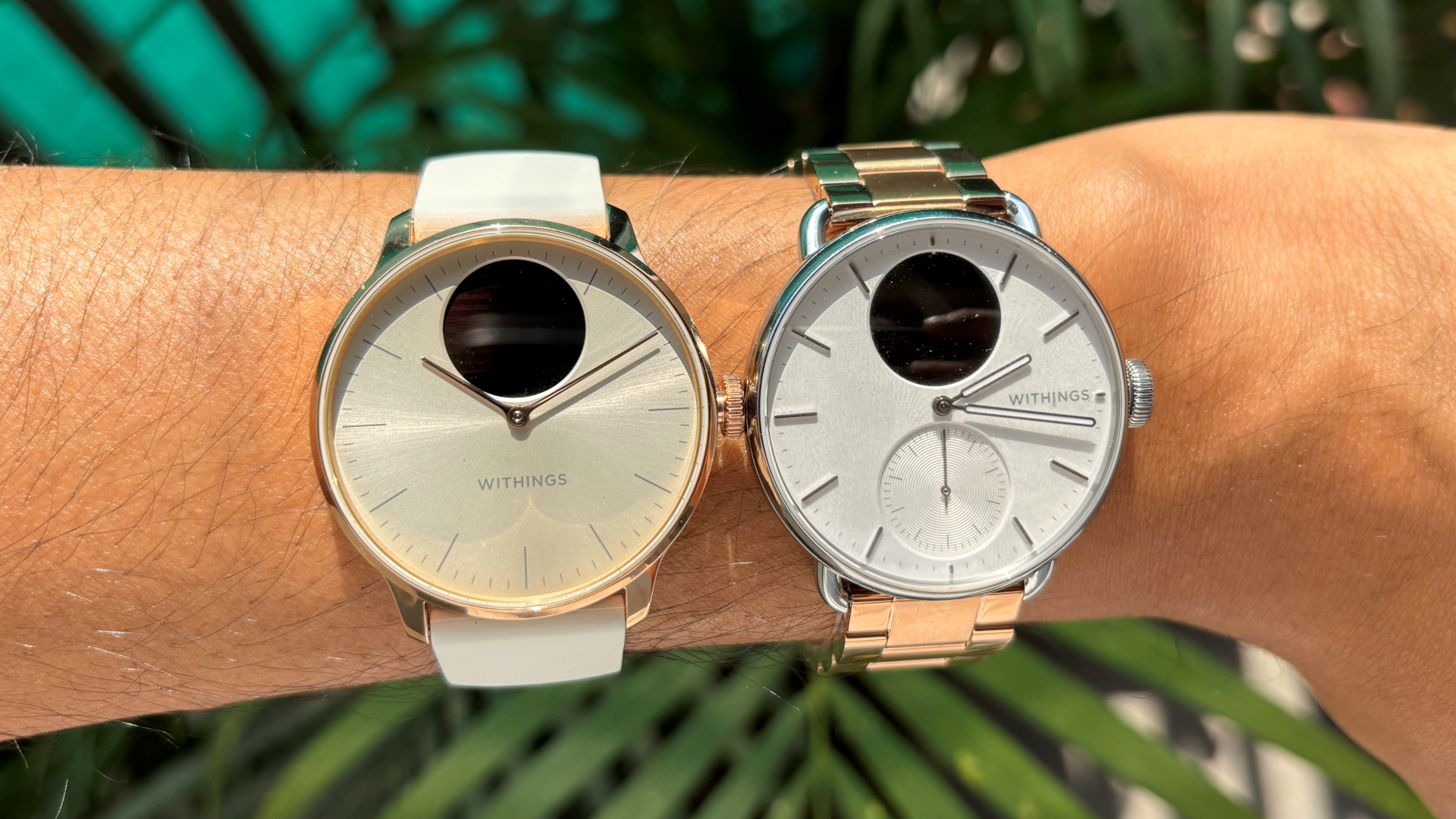
Press the rotating crown on its side or raise the watch, however, and a tiny greyscale OLED screen will come to life. Unlike a regular smartwatch that ships with full-fledged apps, the ScanWatch’s nearly half-inch display (0.63-inch) is your only portal to its smart abilities.
By default, it shows the time and the date, but you can cycle between numerous widgets and information, such as your heart rate, distance covered, breathing exercises, workouts, and more. At 283 pixels-per-inch (ppi), it’s plenty sharp and bright enough to read outdoors; although I do wish the sapphire glass was a little less reflective.
Overcoming one of the pet peeves of its predecessor, the ScanWatch 2 is considerably less bulky. It’s about 40% lighter than the ScanWatch and much easier to wear at night. Plus, the default fluoroelastomer strap is comfortable and does well to stay clean and keep off sweat stains.
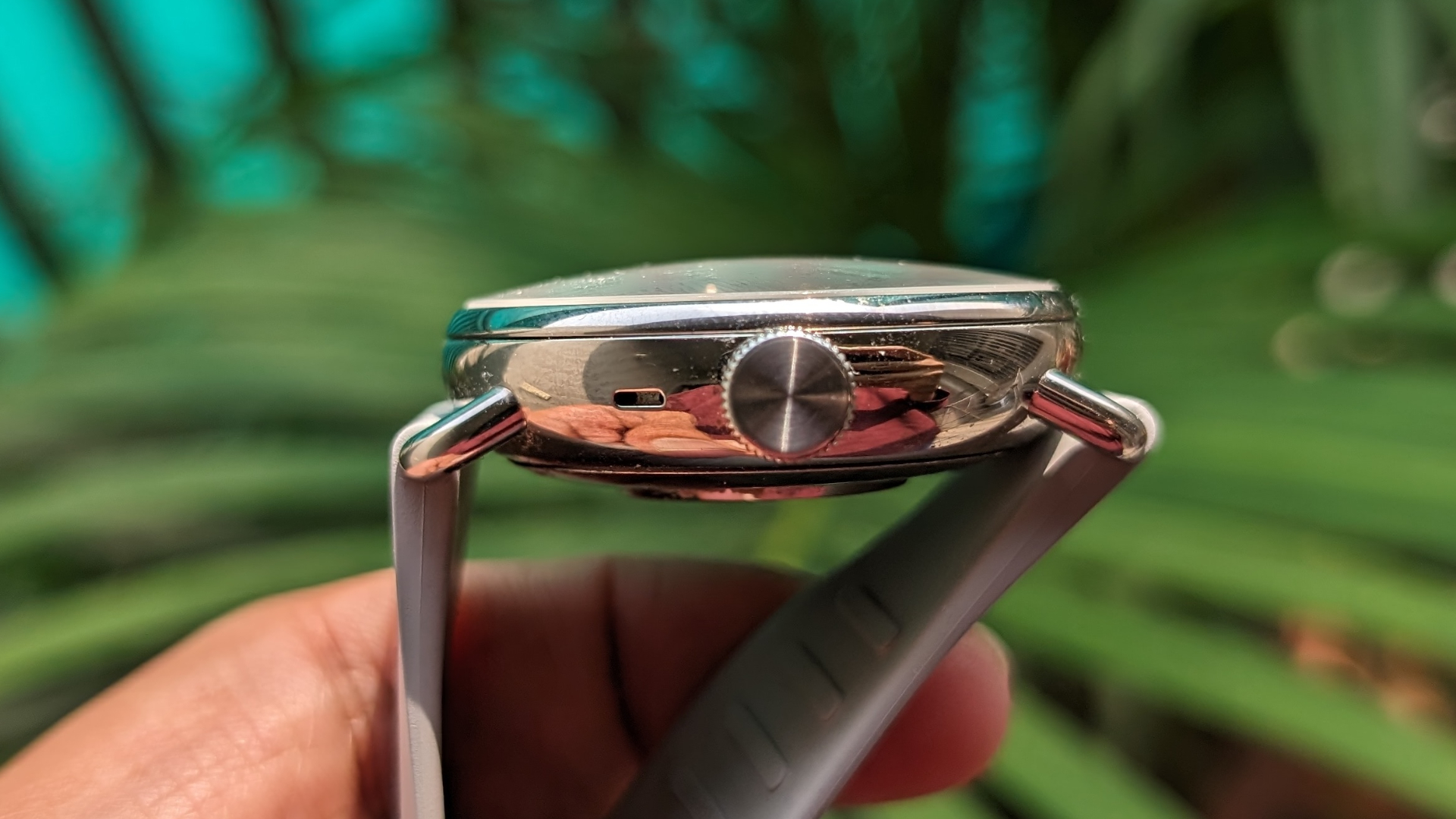
The 38mm model I was testing is available in more color options, including a dark blue and a beige watch face housed inside a gold-tinted casing. I would recommend opting for a darker face, as on the white model I had, the screen stands out like a black blob.
The ScanWatch 2 has a timeless and elegant appearance that’s hard to not admire and solves a complaint I typically have for smartwatches: it goes well with any dress code, whether I’m playing tennis or heading to a nice dinner.
Withings ScanWatch 2: Software
If you’re already a smartwatch owner, the ScanWatch’s functionality may feel limited. You can’t pick up calls, respond to notifications, tap to pay, control music playback, or access mini versions of your favorite apps. Most of this is by design, however. It’s meant to be far less intrusive and built to quietly track you and your activities — minus the round-the-clock buzzing.
For the most part, it works. From the watch, I can access the essentials, such as kicking off workouts and breathing exercises, checking my heart rate, how many calories I’ve burned, and more.
You can read notifications but they arrive tape ticker-style. So, in the case of a particularly long message, you’ll have to wait for it to run through the screen; you can’t just scroll like you can on a smartwatch. At the same time, it does what I want it to do, which is tell me whether it requires me to pull my phone out.
Since there’s no touchscreen, each action does need a couple of extra steps on the ScanWatch 2, but, because the interface is responsive, it doesn’t take more than a few seconds and it all never felt like a chore. I can even activate my most frequently used command by long-pressing the crown.
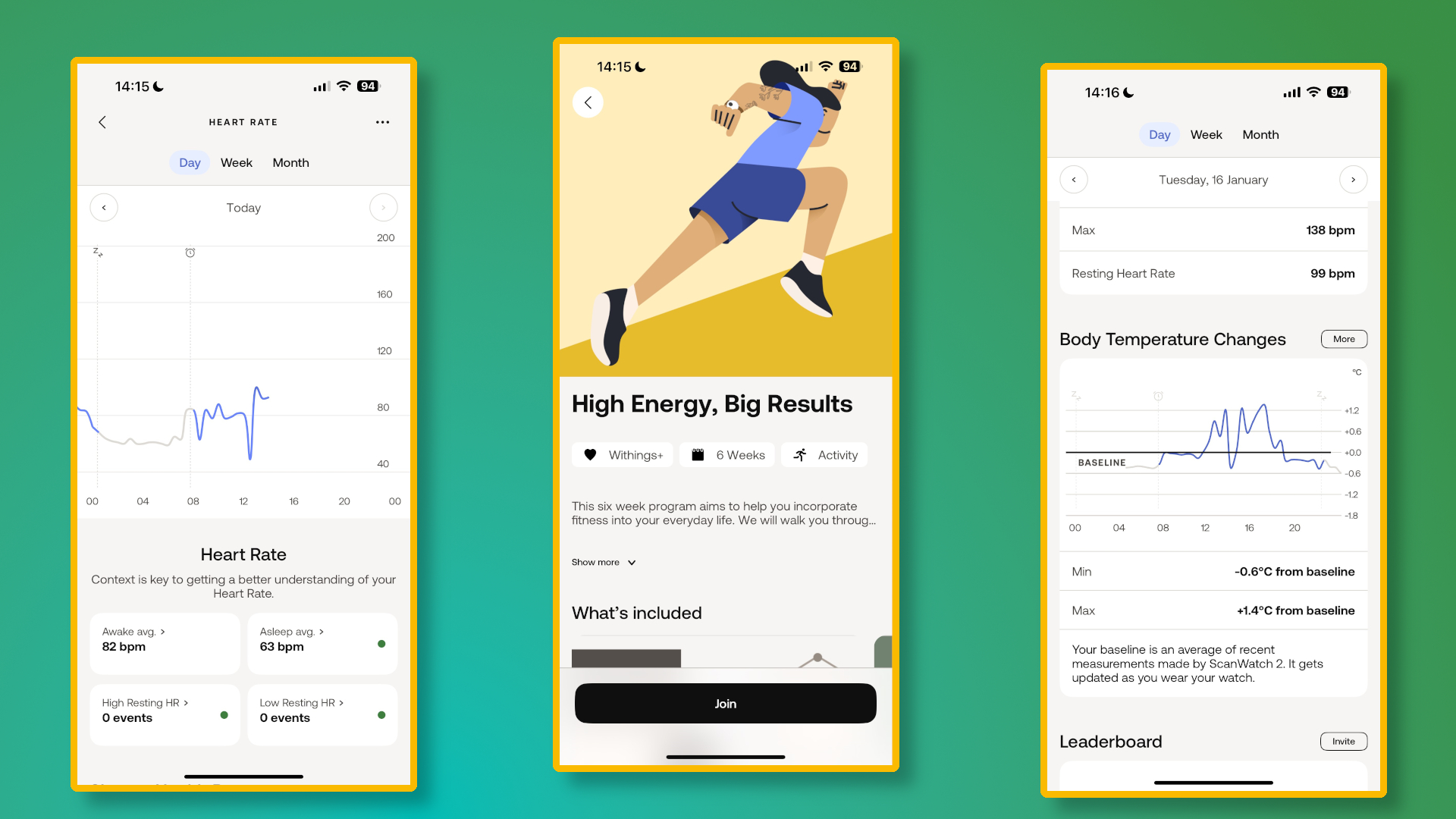
For the rest, however, you’ll have to visit the Withings companion app (iOS/Android), which, unfortunately, has taken a step back on the second-gen ScanWatch. Though it retains much of its minimalistic qualities that have historically made it easy to read and follow, Withings has added scores of new features that have complicated the experience.
When you launch the app, for example, half of the landing page is now reserved for a randomized stack of general health articles and material that you can’t toggle off. It’s only when you scroll down that you begin to see your latest stats and measurements.
Inside the main “Home” tab, you can tap any individual stat to get more data and insights on it, and Withings nicely leaves notes underneath each section to add more context to the readings. I do wish the Home section was customizable and I could choose to remove sections like the “Leaderboard” that I never used to make room at the top for the ones I do.
As before, I still like how approachable Withings’ measurements can be and it doesn’t overwhelm you with numbers. The “Sleep Quality” screen, for instance, tells you a simple sleep score based on the number of interruptions you’ve had in the night, duration, depth, and other various factors. Further, tapping the duration reveals where it stands on a range and how far you are from the sweet spot.
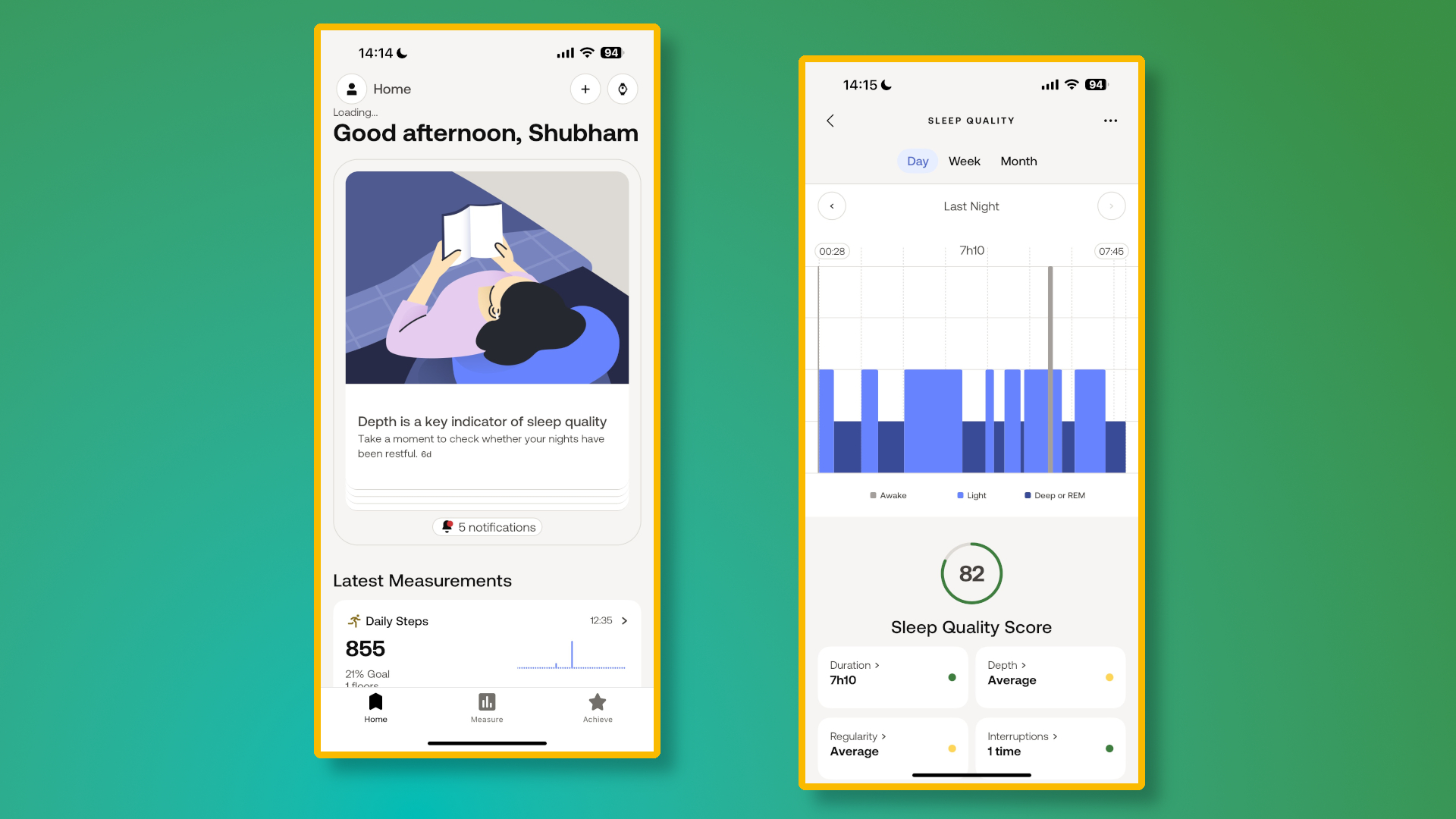
For more health data, you can head into the “Measure” tab, but here (like most fitness companies) Withings will nudge you to subscribe to its optional $10/month plan that gets you access to overall improvement scores, weeks-long health program, and more. The last “Acheive” tab similarly promotes other Withings products and is largely reserved for workout programs solely accessible through the Withings subscription.
Though Withings’ guided programs are well-thought-out, I didn’t feel the need to pay for them as similar high-quality virtual training plans are available for free on apps like Nike Training Club.
For someone who’s not looking to scroll and tap their watch constantly and still wants their health tracked in the background, the ScanWatch 2’s software can prove more than enough. However, for existing smartwatch users, it can be a letdown. I’d also wish to see Withings, in the subsequent updates and models, add some missing practical smartwatch tools like tap-to-pay and music control.
Withings ScanWatch 2: Health and fitness tracking
The Withings ScanWatch 2 is equipped with a treasure trove of health sensors and offers most of the fitness trappings you’d find on top-of-the-line smartwatches. It can detect abnormal heartbeats, record an ECG, measure your respiratory rate and blood oxygen levels, and much more.
Plus, it can track dozens of different workouts, including surfing, yoga, pilates, and various sports like Padel. To record most of these, you’ll have to manually tell the watch to begin tracking as automatic detection is only available for about half a dozen basic activities. That wasn’t usually an issue for me, as the long-press shortcut allowed me to quickly start the workout I do regularly.
What has an issue was the ScanWatch 2’s inconsistencies. In most conditions, the ScanWatch 2 produces accurate metrics and nicely breaks down workouts into zones such as, light, moderate, and intense to measure my recovery and fitness level based on my oxygen consumption.
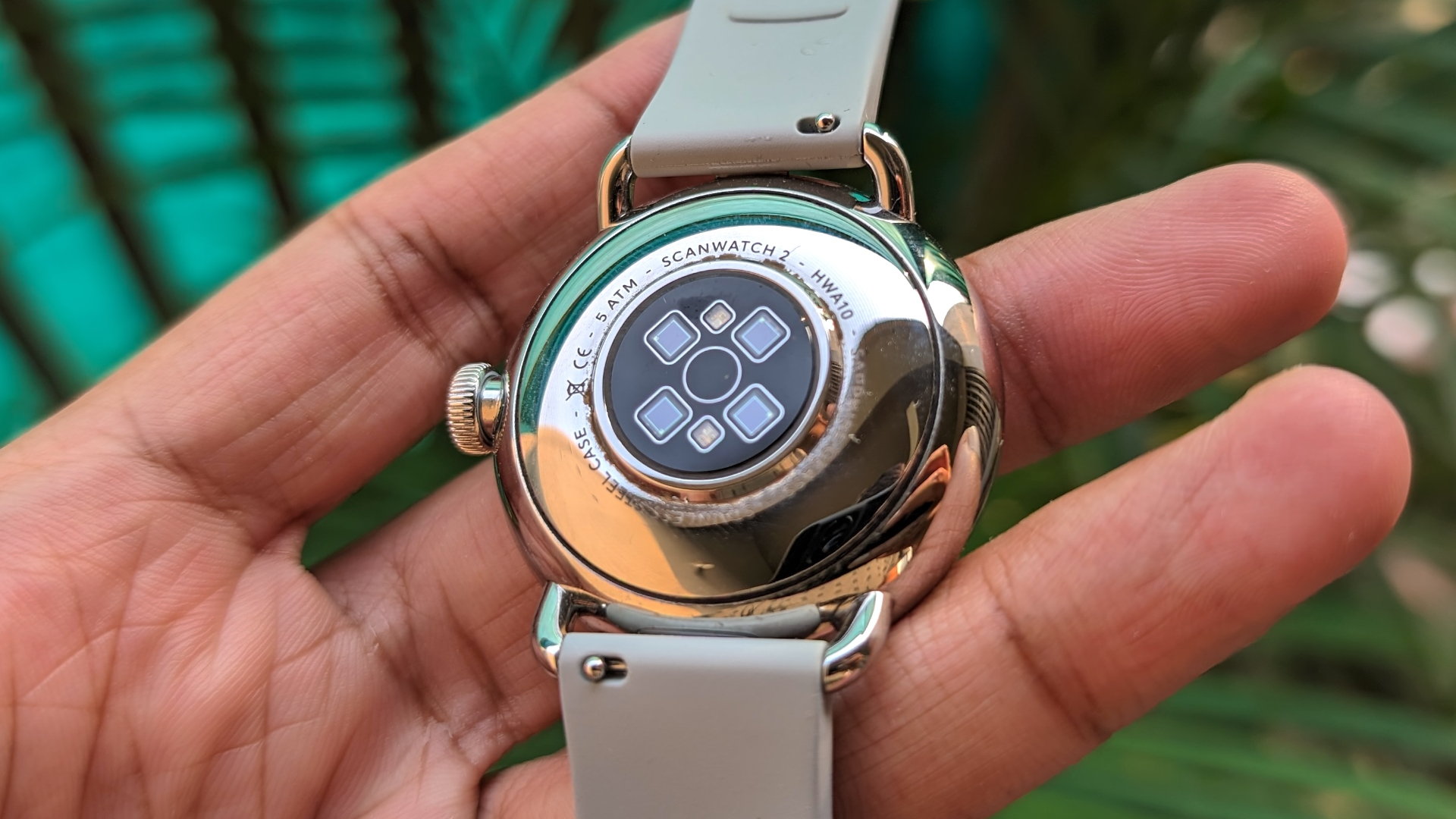
Sadly, the ScanWatch 2 occasionally failed to record these additional data points, and instead only tell me how many calories I burned. On top of that, it would sometimes log car drives and walks as swimming and cycling activities.
If you’re a runner, you may also find the lack of onboard GPS frustrating. The ScanWatch 2 relies on your phone to map your runs and calculate the distance you covered. Sleep tracking, on the other hand, has been perfect for me, and each time, the ScanWatch 2 precisely monitored my nighttime sleep (and naps).
The ScanWatch 2’s highlight is its ability to read your temperature. It can spot fluctuations in your baseline skin temperature day and night to let you anticipate fevers and it works. One evening, I noticed the chart rising a bit every couple of hours and the next morning, I woke up sick.
Withings ScanWatch 2: Battery life
The biggest advantage of the ScanWatch 2’s toned-down smart functions is its battery life. It can last close to a month on a single charge -- 26 days in my case, to be precise, with all features switched on.
The clamp-based proprietary charger, which prevents you from knocking the watch out of place while it’s plugged in, can top it up from empty to 100% in two hours.
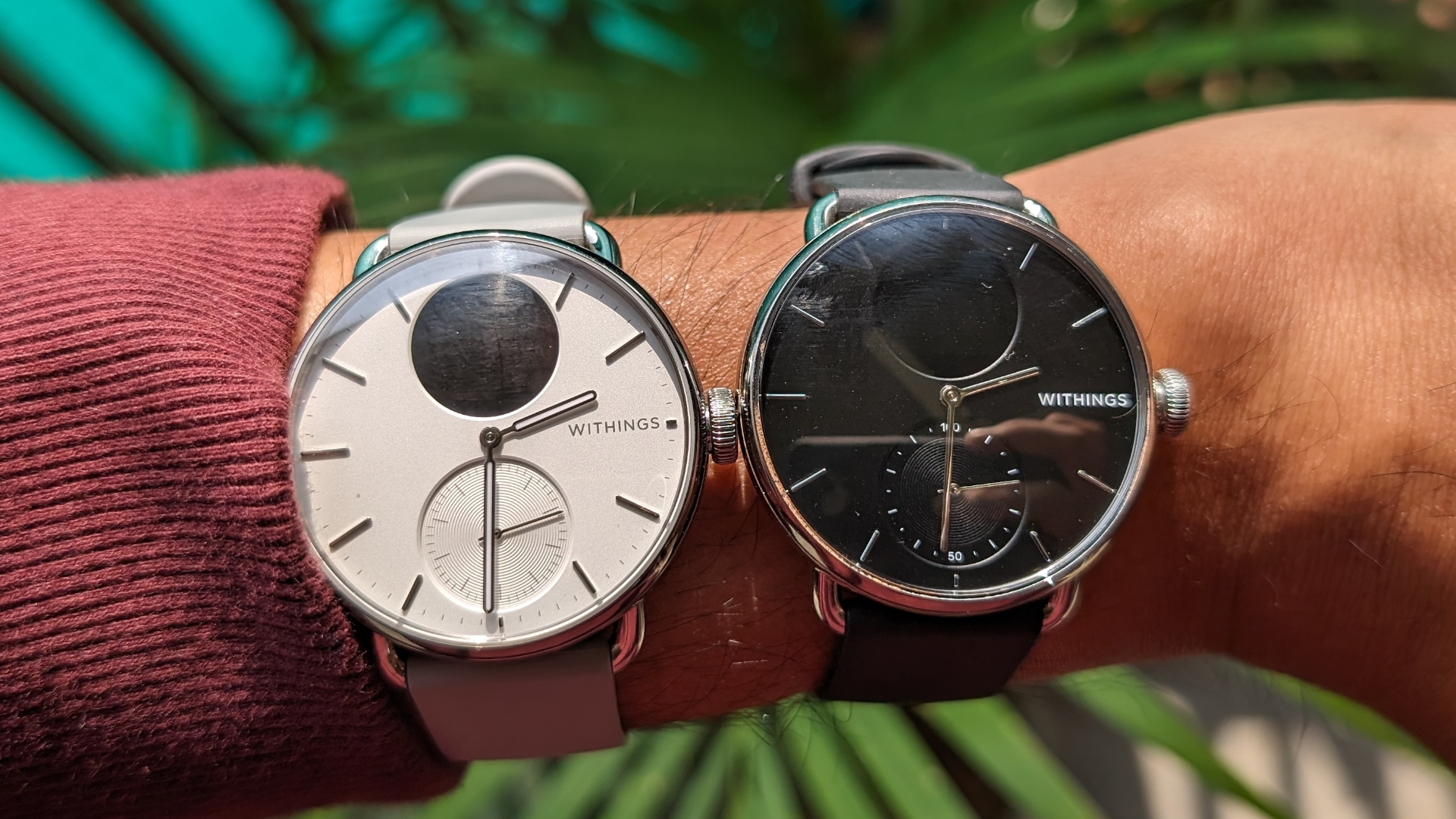
Bottom line
The Withings ScanWatch 2 is perfect for those who don’t like smartwatches, yet still want to monitor their health. It looks nice, lasts for weeks, and houses a laundry list of advanced sensors without feeling bulky. The only major complaint I have, apart from the lack of GPS, is the bloated app, which I’m hoping Withings will streamline and make less subscription-oriented in future updates.
At the same time, Withings hasn’t added much to justify the second-gen ScanWatch’s price hike, and the original can do most of what its successor can, except for reading your temperature.
So, as long as you’re comfortable with the ScanWatch 1’s bulk and can find it in stock, you should go for that instead. Alternatively, you can grab the much more colorful $250 ScanWatch Light, which works and looks the same but lacks a handful of advanced health features like ECG and blood oxygen tracking.
Shubham Agarwal is a freelance technology journalist from Ahmedabad, India. His work has previously appeared in Business Insider, Fast Company, HuffPost, and more. You can reach out to him on Twitter.
